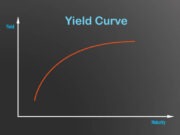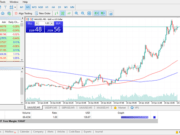
Economics is a discipline that revolves around supply and demand, and how the market responds to shifts in these two concepts. Two terms that are often interchanged in everyday conversation are change in demand and change in quantity demanded. However, these terms hold distinct meanings that are important to understand to make informed financial decisions. In this blog, we’ll delve into the difference between change in demand and change in quantity demanded, and how these differences affect businesses.
Change in Demand
Change in demand is a fundamental economic concept that refers to the shift in the market’s demand curve. Demand is influenced by a variety of factors, such as changes in consumer preferences, income levels, and market size. Suppose the demand for smartphones increases due to the introduction of new features or a growing market size, causing the demand curve to shift to the right.
In that case, the price of smartphones will increase, all else being constant, as suppliers try to capitalize on the higher demand. Similarly, if the demand for smartphones decreases because of a decline in consumer preference or a smaller market size, the demand curve will shift to the left, and prices will decrease.
Change in Quantity Demanded
On the other hand, change in quantity demanded refers to a movement along the demand curve, caused by a change in price, holding all other factors constant. This means that if smartphone prices decrease but there is no change in consumer preferences or market size, the demand curve will remain constant, but there will be a movement along the curve as consumers react to the change in price. In this case, as demand increases, suppliers will try to meet this demand, causing an increase in the quantity supplied.
Factors Affecting Change in Demand and Quantity Demanded
Understanding the factors that influence demand and quantity demanded is essential in predicting and responding to changes in the market. Some examples of factors that affect demand include:
– Changes in consumer taste and preferences
– An increase or decrease in income levels
– Market size and demographics
– The availability of substitutes
– Environmental changes or crises
On the other hand, some factors that affect quantity demanded include:
– Changes in price
– Consumer income levels
– Availability of substitute products
– The elasticity of demand
Conclusion:
In conclusion, change in demand and change in quantity demanded are two fundamental concepts of economics that are important to understand in making financial decisions. Change in demand refers to a shift in the market’s demand curve, while change in quantity demanded refers to movement along the curve caused by changes in price. A thorough understanding of the factors that affect these two concepts can help individuals and businesses predict and respond to changes in the market, making informed financial decisions that will impact their bottom line positively.


































